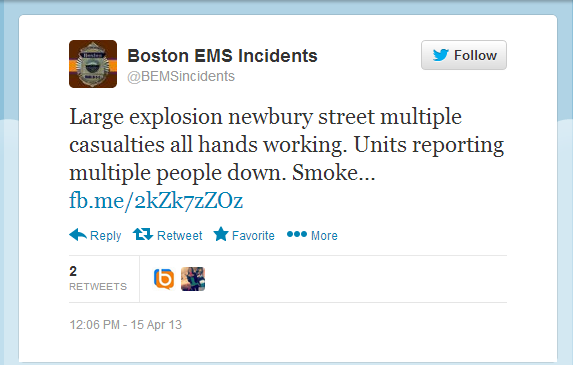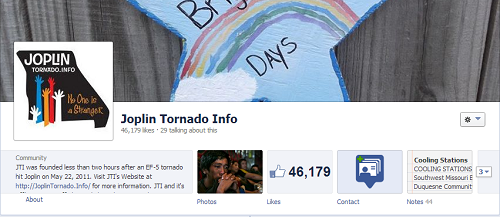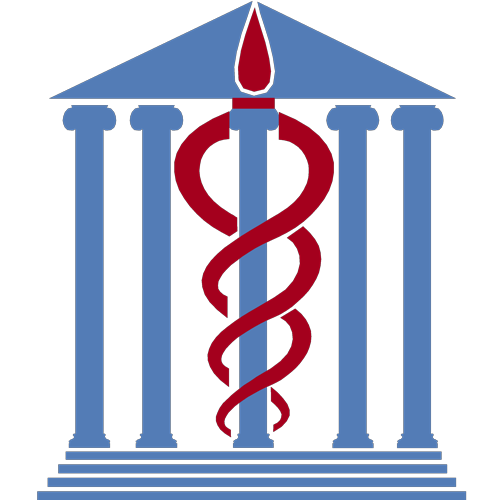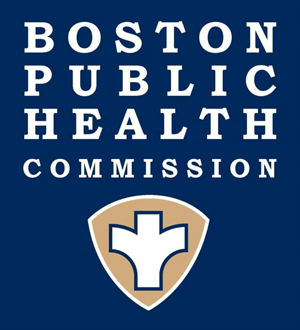Public Resources
Public Resources
SOCIAL MEDIA BEFORE, DURING, & AFTER EMERGENCIES[edit]
Social Media Overview
A. Definition of Social Media
“Social media refers to the means of interactions among people in which they create, share, and exchange information and ideas in virtual communities and networks.” 1
In the emergency preparedness, response, and recovery realm, social media is an important channel of broadcasting messages to the public, and allows for two-way communications between emergency officials, stakeholders, and the public 2. Furthermore, the “public is increasingly turning to social media to obtain new information during emergencies and to share first hand reports in the form of text, pictures, videos, or a combination of the three, aiding in greater situational awareness and providing opportunities for emergency officials to engage in effective conversation with the public.” 3
B. Value of Social Media Use in Emergencies
The use of social media in preparing for, responding to, and recovering from emergencies has garnered federal attention, emphasizing improved communications between government entities and constituents. During the 2013 Subcommittee on Emergency Preparedness, Response, and Communications Committee on Homeland Security hearing on social media, Chairman Susan W. Brooks stated, “In today’s technology driven world, social media and other types of new technology are becoming one of the primary ways we receive, process, and relay information.” 4
Many local, state, and federal officials have responded to this trend by using social media as a significant part of their routine communications and emergency plans, as it allows for rapid dissemination of information to thousands of individuals without having to invest much time and financial expense. The public has come to rely on information from emergency officials through social media, with over 80% of individuals expecting response agencies to monitor and respond on social media platforms before, during, and after an emergency. 5
The value of social media use in emergencies is twofold. Not only does social media use support communication from emergency officials to the public, but response agencies can use posts from the public to gain situational awareness and assess the needs of the community. 6, 7
It is important to understand the demographics who utilize each of these social media platforms in order to reach your community. For instance, in 2015, according to the Pew Research Center, Facebook is the most popular social media website with 72% of adults who utilize the internet making up its user base.8
Although the reach of social media is very broad, those involved in disseminating public information should remember that there are populations who are not on social media. Developing a comprehensive communications plan includes building relationships with organizations and people that can help reach community members who may not use social media as part of their everyday communications, such as elderly individuals. 9
C. Incident-Specific Uses of Social Media
Below are examples of how social media has been used by emergency officials and the public during and after recent emergencies.
April 2013 – Boston Bombings:
- Many agencies - including the Mayor’s Office of Constituent Engagement, the Boston Police Department, the Boston Parks Department, the Boston Public Health Commission, Boston Emergency Medical Services, and the Boston Globe - communicated via social media during and after the Bombings.
- Over 6 million tweets were sent on the day of the Bombings. 10
- Key words included “Boston” and “Boston Marathon,” and popular hashtags included #bostonstrong and #prayforboston. 11
- A timeline of tweets, including pictures and videos, told the story of the Boston Bombings from the immediate response to the conclusion of the manhunt. 12
  |
October 2012 – Hurricane Sandy:
- Hurricane Sandy was the second most discussed topic on Facebook in all of 2012, exceeding the presidential election. 13
- The top five shared terms on Facebook were “we are ok,” “power,” “damage,” “hope everyone is ok,” and “trees.” 14
- Over 200 million disaster-related tweets were sent during the week of Hurricane Sandy.
- Key words included “sandy” and “hurricane,” and popular hashtags included #sandy and #hurricane. 15
- After Hurricane Sandy, FEMA tweeted, “Phone lines may be congested during/after #Sandy. Let loved ones know you’re OK by sending a text or updating your social networks.” 16
- Instagram users uploaded Sandy-related photos at a rate of 10 photos per second. 17
May 2011 – Joplin Tornado:
- A Joplin, MO hospital employee used Facebook to successfully locate 1,100 missing hospital workers after the tornado. 18

March 2011 – Tohoku Earthquake and Tsunami:
- 1,188 tsunami-related tweets were sent each minute during the tsunami and resulting nuclear fallout in Japan. 19
- Facebook recorded 4.5 million status updates from around the world containing the words “Japan,” “Tsunami,” and “Earthquake” within one day of the event. 20
January 2010 – Haiti Earthquake: There were 2.3 million tweets containing the words “Haiti” or “Red Cross” between January 12, 2010 and January 14, 2010.
- Nearly 200,000 of those tweets contained the number “90999,” sending a $10 donation to the Red Cross and raising $3 million dollars in the first 48 hours. 21
D. Building Your Social Media Strategy
1. Identify Your Current Level
The first step in building your social media strategy is to identify your agency’s current level of social media use. Use the table below as a reference to assess what level you are at now. 22
Level Number/Name | Description |
Level 1: Monitor | Level 1 involves one-way communication from the public. In this stage, emergency managers watch and listen to social media without posting information or responding to posts. Monitoring social media allows emergency managers to better understand what social media outlets are being used and what users are writing about. |
Level 2: Command and Control | Level 2 involves one-way communication to the public. The two main goals of this level are to deliver timely information and to motivate public action to ensure safety and well-being before, during, and after an emergency. |
Level 3: Conversation | Level 3 involves two-way communication. The conversational nature of this level allows emergency managers to gather information from and disseminate information to the public. The goal of conversation is to minimize resource and information conflicts. |
Level 4: Cooperate | Level 4 involves direct conversation between emergency managers and specific individuals or groups through targeted messages on social media. These conversations facilitate a shared understanding of the situation and result in shared information and resources. |
Level 5: Collaborate | Level 5 involves taking the shared understanding, information, and resources from the previous level and applying them directly to produce collective response and recovery documents. This level of engagement is characterized by in-depth dialogue and joint effort among varies parties on social media. |
2. Identify Your Desired Level
Identify your agency’s desired level of social media use. Use the table above as a reference to assess what level you want to reach. 23 Outline a plan that describes your objectives and goals in building your social media strategy, and the steps you will need to take to accomplish them.
Here are a few examples of how build to your desired level:
- Create a Facebook and Twitter account for your agency
- Determine what agencies’ emergency preparedness and response social media sites you will monitor, when you will monitor, and for how long
- Make a commitment to post at least three one-way communication messages a day
- Make a commitment to post at least one conversational message a week, and respond to user comments
FEMA offers an online Independent Study course titled “IS-42: Social Media in Emergency Management”, containing information and resources that will aid in building your social media strategy. Additional courses may be added on more advanced social media concepts in the future. To take the basic course, click here.
3.Establish Policies and Plans
Establish documented plans and policies when building your social media strategy. Below is a list of considerations that should be incorporated into your agency’s policies and plans. 24, 25
Policies: Develop a set of policies regarding your social media use.
- Outline what type of information and comments will be responded to or removed
- Establish who can access various social media platforms and what type of information they can post
Plan: Determine where to integrate social media into overall communications and emergency plans.
- Identify potential issues with incorporating social media into your emergency communications and response plans and identify methods to resolve them
Presence: Build your social media presence before you need it.
- Ensure a connection with your audience in advance by delivering useful information during normal periods
- Promote your presence and related hashtags so your audience knows where to turn during an emergency
Chain of Command: Have a chain of command and back-ups in place.
- Determine who from your senior management and communications team needs to be contacted if social media messaging will be implemented during an emergency event
- Include mobile phone numbers and email addresses in the communications team list
- Consider who will be the responsible for managing social media platforms during off hours, weekends, and holidays
Emergency Power: Determine if and how to access your systems remotely to keep them going during a power outage.
Practice this power outage scenario routinely
4. Build and Retain Your Audience
Follow the basic public relations principles below to build your audience and establish your credibility before an emergency strikes. Using these principles will strengthen your ability to communicate with your audience during an incident and the ensuing recovery period. 26
Be authentic: Develop an authentic voice on social media by speaking to your audience in a genuine manner. Authenticity is the key to establishing real, trusted relationships over social media.
Be transparent: Keep open lines of communication to build and maintain trust. This is particularly important to ensure the public receives official messages at crucial times.
Use skillful self-promotion: Do not barrage your audience with purposeless messages and promotions; bombarding your audience will cause users to hide your posts or unfollow or unlike you. Consequently, the public will not receive your messages during crucial times of communication.
Be responsive: Be responsive to all messages, queries, criticisms, and compliments. The worst thing you can do is create a post and forget about it. Engage with your community in a timely manner, particularly during an emergency.
Reciprocate: Share content, stories, and successes of those in your audience and partner organizations.
Be compassionate: Be empathetic in social media messages during an emergency, as this is a sensitive time for many individuals who will be looking to your posts for information and comfort.
Be responsible: Only post information from credible and reliable sources. Do not re-post public messages without confirming the information first. Use proper spelling, grammar, and punctuation on all messages. Do not abbreviate words or disregard grammar in order to make a post shorter. Proofread all messages before posting.
Topic Home | Next »
References:
1 Social Media Overview - Digital Communications. (n.d.). Retrieved from http://communications.tufts.edu/marketing-and-branding/
2 FEMA. (2013, June 18). IS-42: Social Media in Emergency Management – Lesson 2: The Business Case for Using Social Media for Emergency Management. Retrieved from https://training.fema.gov/is/courseoverview.aspx?code=IS-42
3 Ibid.
4 Subcommittee Hearing: Emergency MGMT 2.0: How #SocialMedia & New Tech are Transforming Preparedness, Response, & Recovery #Disasters #Part1 #Privatesector. Retrieved from https://homeland.house.gov/activities/hearings/emergency-mgmt-20-how-socialmedia-and-new-tech-are-transforming-preparedness-response-and-recovery-disasters-part1-privatesector
5 Bennett, S. (2011, October 03). In Case of Emergency Use Social Media. Retrieved from http://www.mediabistro.com/alltwitter/emergency-use-social-media_b14412
6 Ellis, E. (2013, September 17). Gnip Blog – Social Data and Data Science Blog – Gnip. Retrieved from http://blog.gnip.com/how-social-media-is-used-in-natural-disasters/
7 University of San Francisco. (n.d.). Social Media The New Face of Disaster Response. Retrieved from http://onlinempa.usfca.edu/resources/webinars-infographics/social-media/
8 Mobile Messaging and Social Media 2015. (2015, Aug 19). Retrieved from http://www.pewinternet.org/2015/08/19/mobile-messaging-and-social-media-2015/
9 Duggan, M. and Smith, A. Social Media Update 2013. Retrieved from http://www.pewinternet.org/Reports/2013/Social-Media-Update.aspx
10 Haggerty, A. (2013, April 16). Boston Marathon crisis: How social media responded | The Drum. Retrieved from http://www.thedrum.com/news/2013/04/16/boston-marathon-crisis-how-social-media-responded
11 Rogers, S. (2013, July 10). The Boston Bombing: How journalists used Twitter to tell the story | Twitter Blogs. Retrieved from https://blog.twitter.com/2013/the-boston-bombing-how-journalists-used-twitter-to-tell-the-story
12 Kanalley, C. (2013, April 21). Craig Kanalley: Boston Marathon Bombing Timeline: The Week in 50 Tweets, 5 Videos. Retrieved from http://www.huffingtonpost.com/craig-kanalley/boston-marathon-bombing-timeline_b_3125721.html
13 Griggs, B. (2012, October 30). Sandy is the year’s No. 2 topic on Facebook. Retrieved from http://www.cnn.com/2012/10/30/tech/social-media/sandy-facebook-chatter/
14 Fox, Z.
15 Shih, G. (2012, November 2). Twitter Activity Spiked During Hurricane Sandy: Over 20 Million Tweets About The Disaster This Week. Retrieved from http://www.huffingtonpost.com/2012/11/02/twitter-hurricane-sandy_n_2066281.html
16 Fox, Z.
17 Ibid.
18 Ibid.
19 Ibid.
20 Ibid.
21 Ibid.
22 FEMA. (n.d.). Matrix of Social Media use in Emergency Management. Retrieved from https://emilms.fema.gov/is0042/groups/193.html
23 Ibid.
24 Lauby, S. (2009, June 02). 10 Must-Haves for You Social Media Policy. Retrieved from http://mashable.com/2009/06/02/social-media-policy-musts/
25 U.S. Department of Health and Human Services. Policies that Apply to Social Media. Retrieved from http://www.hhs.gov/web/socialmedia/policies/index.html
26 How to Create Positive PR Through Social Media. (2013, May 29).

